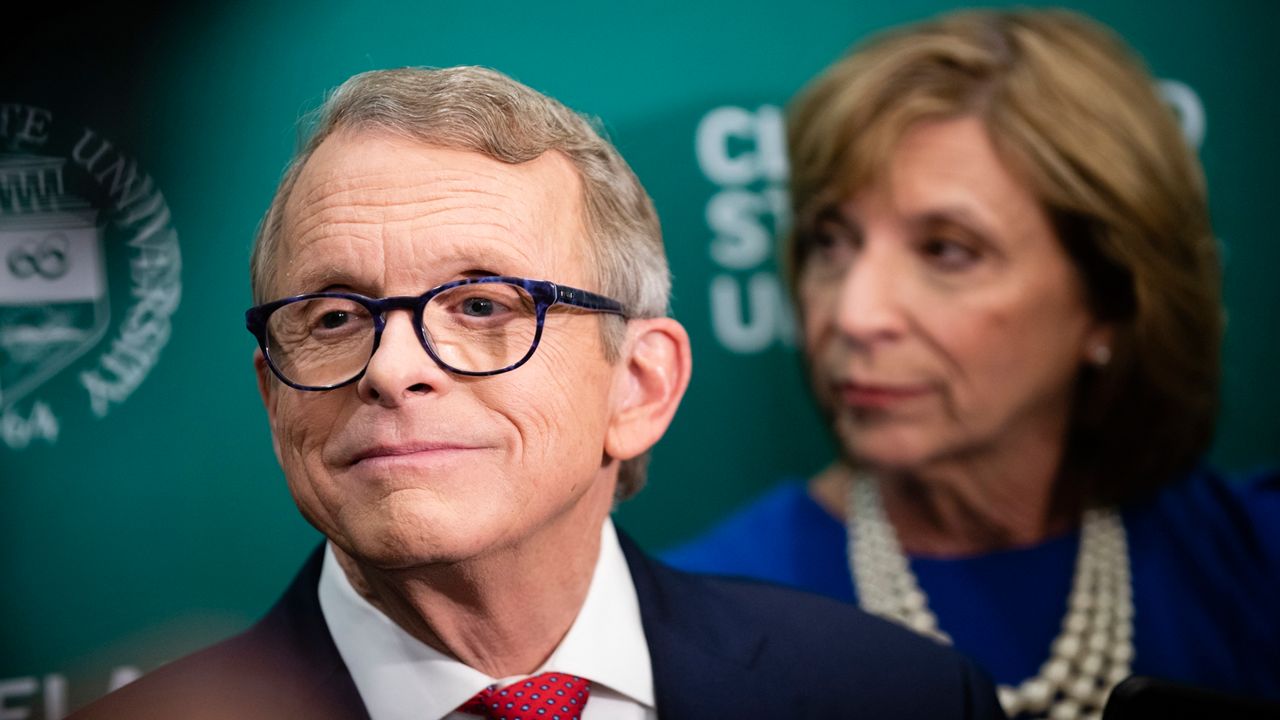COLUMBUS, Ohio (AP) — As Republican Ohio Gov. Mike DeWine gears up for his reelection campaign next year, Democratic opponent Nan Whaley has called on him to take stronger action on the coronavirus pandemic.
DeWine, among the most aggressive of governors at the outset of the pandemic, has since seen his emergency powers limited by the Legislature, which is controlled by supermajorities of fellow Republicans in both chambers.
He has cited the restrictive legislation among his reasons for not imposing new mandates, as well as a belief that “the vast majority of people” nearly 18 months into the crisis want to make their own decisions.
The Associated Press takes a closer look at those positions:
WHAT DID WHALEY ASK OF DEWINE?
Whaley, the mayor of Dayton, last week called on DeWine to mandate mask-wearing at all K-12 schools, which would be in line with the most recent guidance of the Centers for Disease Control and Prevention.
DeWine has strongly urged that school districts require masks, but stopped short of ordering them to do so.
Whaley contrasts the state’s requirements with those in Dayton, where school and city indoor mask requirements are in place and all city employees have been required to get a COVID-19 vaccine by Sept. 20 or undergo regular virus testing at their own expense.
HOW DID DEWINE RESPOND?
Asked if he would exercise his power to issue temporary emergency orders, DeWine told reporters part of governing is understanding one’s place in history. The statement implied that the people’s appetite for government mandates may have been different in March 2020 than it is now — as evidenced by the legislative backlash DeWine has felt.
“We’re clearly well past the time when the state can mandate to parents, to local school districts, to parochial or private schools, what actions to take,” he said. “These decisions today rest with each parent, rest with the parents and rest with the school officials.”
WHAT DOES THE PUBLIC WANT?
As COVID-19 cases surge around the country, an Associated Press-NORC Center for Public Affairs Research poll released Monday showed about 6 in 10 Americans support mask mandates for students and teachers in K-12 schools.
Similar shares say teachers and eligible students should also be required to receive a COVID-19 vaccine, the poll found.
The poll also found a sharp political divide, however. About 3 in 10 Republicans said they favor mask requirements for students and teachers and vaccine mandates in schools, compared with about 8 in 10 Democrats.
What that means in a nutshell? DeWine is playing to his base, and Whaley is playing to hers.
DID LAWMAKERS REALLY TIE DEWINE’S HANDS?
The bill that limited DeWine’s emergency powers was indeed sweepingly restrictive, putting limits on orders issued by him, the lieutenant governor, state auditor, treasurer, attorney general and secretary of state.
It also prevents local health departments from issuing mass school and business orders and allows lawmakers to rescind orders or rules issued in response to an emergency, such as by the Ohio Department of Health.
But the bill, which DeWine vetoed and lawmakers overrode, did leave the governor some options that he has yet to exercise.
WHAT KINDS OF OPTIONS?
The legislation limits DeWine’s declarations of emergency to 90 days barring a legislative extension. Lawmakers can also terminate an emergency order after 30 days under the bill.
When an order is terminated or expires, DeWine has to wait 60 days to reissue a substantially similar order. However, the bill gives the governor the ability to request and receive a legislative waiver of that 60-day waiting period by asking for one and getting their approval.
DeWine has never had occasion to make such a request. He hasn’t tested the bill since it passed by declaring a state of emergency. That would force the Legislature to either live with it or to take a public vote against it that could become important as lawmakers seek re-election next year.
DeWine terminated Ohio’s existing state of emergency on June 18. Sixty days from that date fell on Aug. 17.



